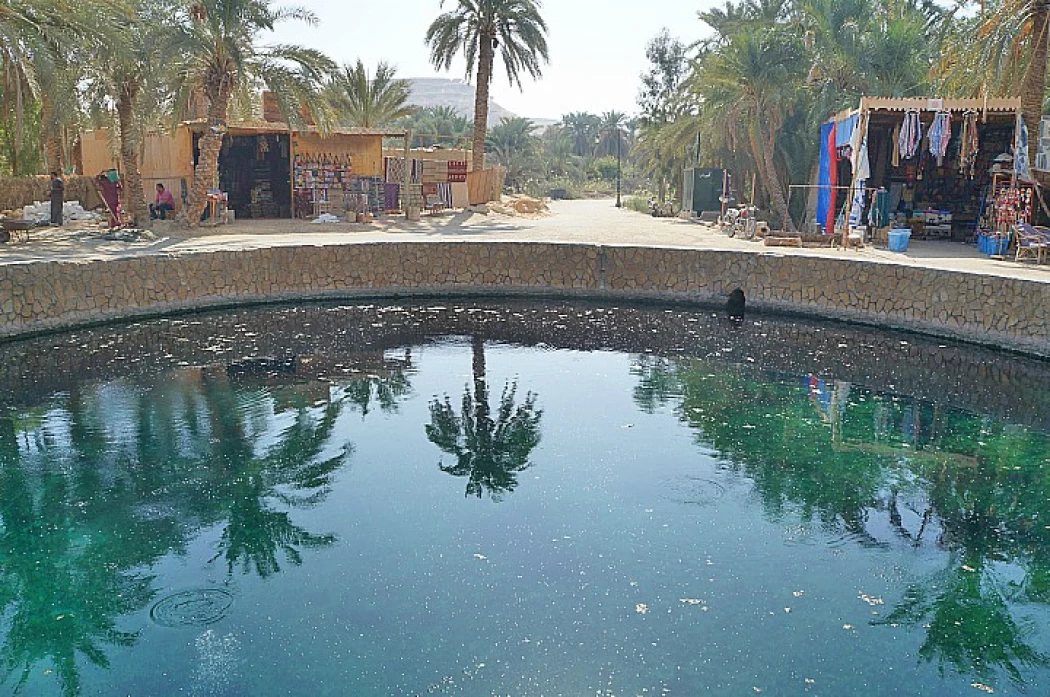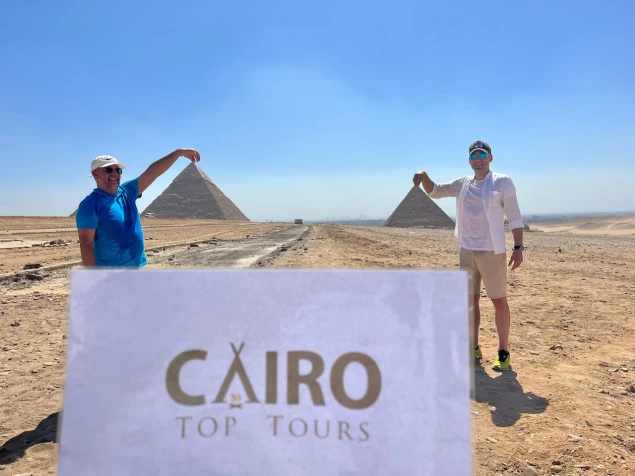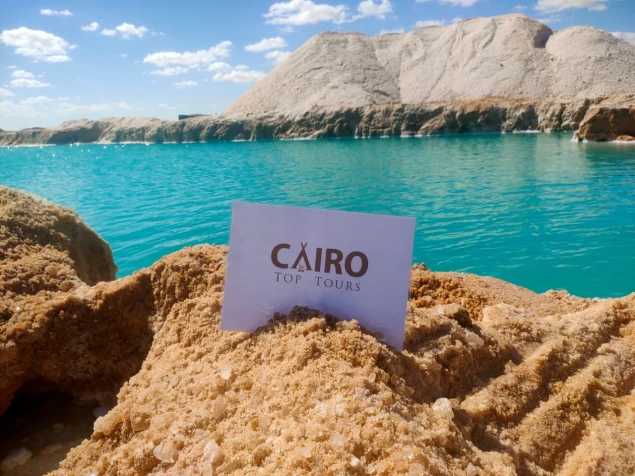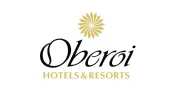
Discover more About Medical Tourism in Egypt
Sulfur and mineral eyes, which are characterized by their unique chemical composition, have spread in Egypt, which exceeds in proportion all the sulfur and mineral eyes in the world. In addition to the availability of silt in the pools of these sulfur eyes, with its therapeutic properties that heal many bone diseases, diseases of the digestive system, respiratory system, skin diseases, and others, it has also been proven to cure patients with articular rheumatism by burial in the sand.
Research has also confirmed that the Red Sea water, with its chemical content and the presence of coral reefs in it, helps to recover from psoriasis. Many tourist areas enjoy the advantage of medical tourism in Egypt, which are areas of great historical fame such as: Helwan, Ain el-Sira, Ain Sokhna, Hurghada, Fayoum, Oasis area, aswan, Sinai, and finally the city of Safaga, located on the shore of the Red Sea, which has all the elements of medical tourism, which is visited by tourist regiments and its fame comes that black sand can get rid of some skin diseases.
The ancient Egyptians believed that man would be resurrected again after he died to live an immortal life, so they were keen to preserve the bodies of the dead by embalming them, and embalming is a process intended by the ancient Egyptians, they also took care of burying the bodies of the dead away from water filtration and placed them in fortified graves in dry places in the desert and inside the pyramids, and these operations were carried out under Advanced Medical Sciences and competent doctors capable of using all that nature has of pharmaceutical and chemical substances.
There are hundreds of eyes and natural wells with mineral and sulfur water spread in Egypt, varying in depth capacity and temperature between 30, 73 degrees Celsius. Laboratory analyses have proven that many of these natural springs contain the highest percentage of sulfur compared to wells scattered around the world, and these natural waters contain several mineral salts and some minerals of therapeutic value, such as sodium carbonate and varying proportions of some metal elements such as magnesium and iron.
Laboratory measurements have also shown the suitability of the salinity ratio in these natural water resources for therapeutic purposes, in addition to the spread of pure natural drinking water wells, which Egypt has expanded its investment and production economically in recent years within the framework of strict scientific control over quality and standard specifications in terms of purity of impurities, parasites and germs, the degree of water hardness and chemical composition, which prompted many major national and foreign companies to compete to invest in this field.
The sands of Egypt were no less rich than its waters, studies have shown that the dunes in the Egyptian desert contain safe and very useful ratios of radioactive elements, and treatment by flooding the body or the painful situation of it with sand for studied and specific periods has led to unprecedented results in several rheumatic diseases such as rheumatoid disease, pain caused by spinal diseases and other causes of acute and chronic pain, which modern medicine is puzzled by.
Marine oases:
The Bahriya oases belong to the Giza governorate and are located 365 kilometers southwest of the city of Giza.
The region combines the historical and archaeological components of tourism with wonderful components of medical tourism and environmental healing.
Among the most important archaeological monuments in Bahariya oases are the tombs of the 26th Dynasty, the cowardice of the sacred birds, the remains of the Roman triumphal arch, the ruins of the temple of ISIS, and the ruins of a temple dating back to the era of Alexander the great .it also contains the Tomb of the valley of the Golden Mummies, which sheds light on a very important period of the history of Egypt at the beginning of the Roman era, The author of this great revelation was the famous Egyptologist Dr. Zahi Hawass.
In the Tomb of the ruler of the oases (the 26th Dynasty of the Pharaohs), one hundred magnificent gold coins were discovered, as well as many golden statues of the gods.
There are about 400 eyes of warm and cold mineral and sulfuric waters in the Bahriya oases , which research conducted by Egyptian universities, national research centers and foreign scientific centers has proven its therapeutic value in rheumatism, rheumatoid and skin diseases, which qualifies it to become one of the most important therapeutic resorts in the world because of its mild dry climate and bright sun all year round.
The Marine oases are popular with tourists from Central, Western and Northern Europe who go to them for hospitalization, especially in the area of Oyoun Bir Halfa with warm water with a temperature of 45 degrees Celsius, the area of Oyoun El Qassa ( 30 – 40 degrees Celsius), the areas of historical Roman wells and the famous peshmo well, which draws its water from two sources, one cold and the other hot, ending in one deep rocky stream.
Medical tourism facilities in the Bahriya oases:
The Ain Sokhna hotel has already been built at the highest level in the Bahriya oases.
The hotel has 50 beds, 24 rooms, a gym, a swimming pool, and a sauna. He also laid the foundation stone for a specialized International Center for environmental healing to benefit from the therapeutic value of hundreds of wells and natural springs scattered in the region.
Siwa:
Siwa is located about 300 kilometers west of Marsa Matrouh, occupies a leading position among the ideal places for medical tourism and natural healing in Egypt, and is characterized by charming poetic tranquility, purity of air, serenity of the sky, and moderate temperature.
Mount dacrur:
It is located in the southeast of the Siwa Oasis, and the citizens of Siwa consider it a sacred mountain. they hold an annual celebration on it in October of each year, after the harvest season ( Valley season ) takes three days, and all the people participate in it.
Since ancient times, the mountain has gained therapeutic importance among the people in rheumatic diseases, joint pain, and a general feeling of weakness and asthenia.
This type of environmental treatment has become so famous that Mount Dakrour has become a famous destination for medical tourism, frequented by Egyptians, Arab brothers, and foreigners alike.
Hot eyes;
Mineral waters are widespread in Siwa Oyoun Oasis, which are used for natural treatment of several diseases such as psoriasis, gastrointestinal diseases, and rheumatic diseases.
The most famous and most important of these eyes is the kigar well, whose water temperature is 67 degrees Celsius, and by analyzing the water of this well, it was found that it contains several mineral and sulfur elements similar to the mineral eyes of the famous Czech Carlo vivari area, which is visited by tourists from all over the world as a natural treatment resort.
The New Valley:
The New Valley governorate is one of the largest governorates in Egypt, occupying about 37.6% of the total area of Egypt.
The history of Egypt is embodied in all ages in the New Valley, where there are many monuments from the Pharaonic, Ptolemaic, Roman, Coptic, and Islamic eras.
The New Valley has a special human character, as its inhabitants are distinguished by unique customs and traditions, and they also excel in a number of industries and crafts for which they have been famous for a long time.
The New Valley enjoys a wonderful climate throughout the year, characterized by dryness, lack of moisture, bright sun, and impeccable air purity from air pollutants in cities and densely populated places.
The area is also dotted with fine sand, herbs, and medicinal plants from which drugs, vegetable, and aromatic oils are extracted. The region is also rich in natural springs and Wells, whose temperature rises to 34 degrees Celsius, and contains several very useful mineral elements.
Beaulac and Nasser wells:
It is located about 28 kilometers south of the city of Kharga, and it is a self-flowing deep well, originating at a depth of 1000 meters, with a temperature of 28 degrees Celsius, surrounded by areas of greenery. Laboratory analysis proved that its waters contain several mineral elements of therapeutic benefit, and soft dunes are scattered near it, which can be used for burial in the sand ( burial therapy ) in joint diseases such as rheumatoid and osteoarthritis, and pain caused by cartilage atrophy of the dorsal, lumbar, and sacral vertebrae.
A rest stop has been set up to serve the pioneers of the region, and a tourist resort is currently being built near it, and Boulaq wells are not far from the highway connecting Kharga with the village of Paris, which leads to Luxor and the southern Valley area, and it is also close to tourist and archaeological sites.
Nasser Wells Group:
Located 18 kilometers south of Kharga, there are three wells of different depths whose water collects in a swimming pool whose water temperature is 28 degrees Celsius throughout the year.
This pool is used to treat rheumatic diseases, chronic pain, skin diseases, kidney stones accompanied by renal colic, and digestive disorders.
This group of Wells is surrounded bya patch of green land with beautiful gardens, bordered by snow-white dunes with fine, pure sand. A camp has been set up on it, including accommodation and a cafeteria to serve the pioneers of the area.
MUT Wells: Located three kilometers from the city of MUT, the capital of Dakhla, it is a set of self-flowing Wells, originating from a depth of 1224 meters. These wells are characterized by their hot water, which has a temperature of 43 degrees Celsius. According to laboratory analyses conducted by the governorate's Health Affairs, the water of these wells contains many mineral elements that are useful therapeutically in cases of rheumatism, psoriasis, and physical pain.
The eye of the mountain well: Located 52 kilometers from the city of MUT, this eye has recently exploded, and there are no places for physiotherapy yet, and its water temperature is 54 Celsius.
Natural and medicinal plants: The oases of the New Valley are dotted with a wonderful collection of wild plants and herbs that can be used in healing, including: - Publican, hibiscus, mint and damask: And all of them are used in the treatment of rheumatism, in addition to the uses of mint in diseases of the digestive system and colic of various kinds. - Iglesias: Sugar balm, which is used in the treatment of diabetics. - Hanadal: It is a bitter-tasting plant, used topically to treat rheumatic pain by heating the fruit and cutting it into two parts, and then placing them on the site of pain.
Elephantine Island: Sand immersion baths are used for therapeutic purposes from March to October every year. Where the sun's Rays are intense. There is a physiotherapy center at the Oberoi hotel, staffed by experts in sports and physiotherapy, and the center also contains saunas and Turkish steam baths, with the availability of those responsible for preparing a Swedish exercise program on a scientific basis.
ISIS island resort: After an unsystematic extrapolation lasting several years, the phlegmatic improvement of rheumatoid arthritis patients among tourists was noted after a few weeks ' stay on the ISIS island. Based on this observation, the Egyptian National Research Center conducted systematic studies that proved this phenomenon beyond doubt with certainty. The center has identified a special treatment program for environmental hospitalization of rheumatoid patients at the ISIS island resort, combining immersion therapy in brown sand baths and exposure to the sun and its ultraviolet rays for three consecutive weeks. This medical coordination had to be done on a well-thought-out basis to adjust the appropriate amount of exposure to ultraviolet radiation so that the patient would come out of it with the greatest benefit, and the fruit of this organized program was beyond all imagination, it led to an improvement of great statistical value in the symptoms of the disease, laboratory indicators of the efficiency of the immune system, the speed of blood sedimentation and indicators of rheumatoid activity.
Hospitalization:
Aswan, with its wonderful dry atmosphere, challenges the greatest winter therapeutic resorts in the whole world.it is particularly suitable for patients with kidney, respiratory system, and rheumatism. it has two sand and water treatment centers where the patient's body is immersed in rheumatism in hot sand. Aswan has aroused the interest of several international medical institutions that have studied its climate and the components of hospital tourism and verified the uniqueness of Aswan's High ultraviolet radiation from its sky, in addition to the extremely low humidity. Treatment with medicinal herbs.
The people of Nubia still believe in herbal medicine, which recent studies have paid attention to and proved its effectiveness in many diseases, and many of these medicinal plants, which were mentioned in ancient Arabic references such as the memory of David of Antioch, the medicinal materials of Ahmed bin Rashid and the law in medicine by Avicenna, are still used in Nubia successfully for the treatment of several diseases, including :
Land pact :
It is a plant used in the treatment of colds and renal colic after boiling and drinking it as tea.
Intrigue :
It is also successfully used in kidney diseases.
Pomegranate peel :
It is used to treat intestinal dysentery after roasting, grinding, crushing, and preparing by boiling as a tea drink.
Embarrassment :
Used to treat constipation and indigestion.
Nubian environmental therapy:
Nubians use the method of immersion therapy in hot sand during sunshine to treat joint infections and stimulate blood circulation, where the treatment is supervised by elders specializing in this type of natural treatment.
The treatment takes on a festive and joyful appearance, as the relatives of the patients and the people of the region gather, who sing Nubian folklore songs dedicated to this occasion, so that boredom does not seep into the same patient and raise his morale.
After the specified time for filling with sand has expired, the patient is wrapped in heavy blankets to protect him from air currents, and then quickly transferred to a closed place where he is served a drink of damsisa or a hot land pact.
These Nubian sheikhs also use Indigo silt ( Damira) to treat migraines, toothaches, and muscle aches.
Scientific explanation of environmental treatment for seizures:
The tangible improvement in rheumatic pains is due to the hot sand, which has a commendable effect on the nerve endings specialized in pain and on blood circulation, which is the same modern physiotherapy method known as Biotherapy, which is based on the use of hot silt or sand rich in mineral elements such as iodine and carbonate with radioactivity within the permissible limits, which is absorbed through the skin.
The Indigo silt stain (demira) is the same Pleoma method used in World sanatoriums, which mixes silt with mineral water for therapeutic purposes based on the property of moist, hot Humid Heat.
The results of the analysis in the laboratories of the Egyptian Nuclear Energy Authority have shown that the surface sand in the Abu Simbel area contains several elements such as silt and carbonates, and research has also shown that the radioactivity in these sands is within safe limits of therapeutic benefit.
Hurghada:
The capital of the governorate, located 295 kilometers south of Suez. Its natural wealth is one of the components of environmental treatment, making it one of the most important therapeutic tourist attractions in Egypt. Hurghada combines treatment with sea water, coral reef mud, sunlight, sand rich in mineral elements with mineral elements, and mine dust mud, and has many multi-level hotels and tourist resorts.
Anna Aslan physiotherapy center in Hurghada:
Anna Aslan physiotherapy center was founded after the unparalleled success of the treatment method discovered by the Romanian doctor and scientist Anna Aslan in 1949.
Through her research on chronic rheumatism, she discovered the successful effect of H3, known as Procaine or Novocaine, and in 1956, Aslan presented her new method of treating the disease.
Since then, Ana Aslan has become internationally famous for her success in the treatment of geriatric diseases, and she was elected president of the National Research Institute of geriatric diseases in Bucharest, where she completed the synthesis of the drug E3, developed it and the most famous method of her treatment with the ANA Aslan Aslan Therapy method, for which she has received many awards and received honors in several international scientific forums.
How to be treated at the center:
The patient undergoes a comprehensive medical examination ( clinical examination, blood tests, immune tests, kidney and liver function).
Diseases treated at the center :
* Prevention of organ weakness caused by aging.
* Psychological depression. Inflammation and stiffness of the joints.
* Parkinson's disease.
* Insomnia.
* Symptoms of menopause in women.
* Blockage of arteries.
Safaga:
The Safaga region is characterized by several factors that make it the most suitable place in the world to treat psoriasis because it is surrounded by high mountains on all sides, which makes it a natural barrier against winds and sandstorms, and therefore its atmosphere is characterized by complete purity of suspended impurities that would scatter the sun's ultraviolet rays an essential role in the treatment of psoriasis and the beach in that area in the form of a Bay whose static waters reflect ultraviolet rays to the surface of the earth as a reflective mirror.
The water has a high salinity with an increase of 35% compared to other seas due to the presence of coral reefs, which increases the density of the water. Therefore, those who swim in this area float easily on the surface of the water, and this decrease in the force of gravity results in a tangible improvement in blood circulation activity, an increase in blood flow to the limbs and skin, in addition to a balance between its concentration outside, which has an effective effect in the treatment of psoriasis, in addition to the effect of intense ultraviolet radiation in this unique region in the world.
Black sand:
Laboratory analysis of Safaga sand proved that it contains three radioactive substances in harmless proportions, namely uranium-thorium-potassium by 40 %, in addition to containing most of the known metal elements with a high amount of gold salts, which are used in the treatment of rheumatoid disease, chronic and acute joint infections, swelling, joint infiltration ( Joint Water), skin nodes especially elbows and skin infections associated with rheumatoid.
Safaga:
The brightness of the warm sun on the Safaga region throughout the year distinguishes it from other places where the sun sets during the autumn and winter seasons.
Patients suffering from heart, liver, kidney, tuberculosis, some malignant diseases, atherosclerosis, high blood pressure, epilepsy and neurological diseases are warned not to go to low-lying areas of the sea because of its extremely harmful effects on them .on the contrary, Safaga's climate is of great benefit to these patients as they can stay there and enjoy its picturesque nature and the components of environmental treatment together.
Safaga water is characterized by a low percentage of bromine, a high percentage of which leads to skin allergies. The village of Mina Vil is a meeting place for recreational and therapeutic tourism.
The village of Mina Ville is located in a unique location that attracts attention, and the climate of the region is unique with unparalleled characteristics. The atmosphere is free of moisture, the sand is golden, and the water is clear, making Mina Ville an ideal place combining recreational tourism and medical tourism alike.
In cooperation with the thermal sanatorium in the city of Karlovy Vary, Czech Republic ( which is one of the most famous health centers in the world), the thermal Carlo Vivari Sports Health Center was opened in 1999 inside the village of Mina Vil.
The center has an area of 800 m2 and is surrounded by a green area of 1000 m2. .it includes reception, medical services, and examination rooms, dressing rooms, two Jacuzzi units, two snorkels, and two saunas, in addition to electric physiotherapy rooms "Electro Therapy", a gym, and massage rooms.
The center is managed by a specialized group of international experts with outstanding experience and competence in this field.
Treatment at the center includes all of the following
Electrotherapy, balneotherapy, massage, physiotherapy with oxygen inhalation, paraffin therapy, geriatric treatment, treatment of gastrointestinal diseases, some metabolic diseases, in addition to several medical and laboratory tests that are updated according to what is new in the field of medical science. - The village offers lovers of different types of Tourism 301 hotel rooms, premium rooms, and suites according to the desire of the tourist, all overlooking the sea. The rooms are double-bedded, air-conditioned, equipped with a telephone, refrigerator, TV, and satellite connection. The village offers excellent services to satisfy all tastes and hobbies for all ages. - For marine mathematics enthusiasts, there is a world-class diving center equipped with the latest equipment and capabilities, a sailing Sports Center at the highest level, modern methods of fishing are available, and cruises to the nearby islands are organized, as well as the famous boat with a glass bottom.
Sinai:
There are many hot water baths in Sinai, such as the Pharaoh's bath and the Moses baths, which are of historical importance .these baths also have therapeutic importance due to their sulfur water content, in addition to all this, the mild climate and the unique location on the shore of the Gulf of Suez, the sanctity of the region and its special location from the heart of the adherents of the three heavenly religions alike.
Pharaoh's bath :
Pharaoh's baths are located on the Gulf of Suez, 250 km from Cairo, which is a group of springs of hot sulfuric water with a temperature of 27 Celsius and flowing from the Pharaoh's bath mountain in the form of a pool with a strength of 3000 cubic meters per day, approximately, and extends on the beach with a length of 100 meters, it is adjacent to sea water, and there is a rock cave carved into the mountain that is used as a natural sauna bath due to the emission of heat from hot sulfuric water from the bottom of the cave to above.
By analyzing water in terms of its chemical, bacteriological and natural properties, its excellent validity and effectiveness have been proven in the treatment of many diseases, the most important of which are rheumatoid and rheumatism of various kinds, gastrointestinal diseases, kidney diseases, lung allergies, liver diseases, skin diseases, and playground injuries, this is to its benefits used for cosmetic purposes, and the sulfur concentration in this water is one of the highest rates of this element in mineral waters in the world. To all this is added the mild climate throughout the year, the dry atmosphere, the vast areas of warm sand that can be used for physiotherapy, surrounded by a mountain range. These wonderful elements were the impetus for the establishment of a tourist health resort under the name of "Pharaoh's baths resort" (still under construction), considered the first and unique of its kind in Egypt and the Middle East.
Egypt has most of the world's treasures, and every day you discover more of them hidden in its land and waters. However, what many do not know is that the Egyptian treasures are not only in its antiquities and history, but also in the Egyptian sands and waters themselves, which treat many diseases. This is what attracts tourists from abroad to enjoy this immediate and fast natural treatment.
When we talk about medical tourism in Egypt, we have to know that it is definitely one of the types of tourism that has internationally spread. It is practiced by tourists heading to attractions that provide natural remedies based on natural resources such as mineral water springs, sulfur water baths, mud, and hot sand, and it is considered one of the tourist attractions in various countries of the world, but in the Arab world, Egypt and Jordan top the list of countries that encourage medical tourism, and the goals behind their practice vary between recreation, relaxation, and entertainment.
This kind of tourism, I mean medical tourism, can likewise be defined as a special type of tourism aimed at obtaining care, medical or purely healthy, to get rid of some pain and health problems under the influence of natural factors present in the environment.
Medical tourism is a source of attraction for several people for the following reasons: The low costs of medical tourism, as the cost of care, treatment, and surgery is much lower in some countries than in others, and the cost of some medical procedures can be as much as 90% lower in other countries.
Some insurance companies offer insurance incentives to promote medical tourism, arranging travel and accommodation for the patient and an accompanying person of their choice. These companies also make all necessary healthcare arrangements, so savings for the insured mean savings for the recipient.
Medical tourism provides entertainment and private nursing care, similar to the luxury offered by foreign hospitals. Some hospitals offer rooms resembling hotel suites and are more generous and attentive to the patient.
- Tourists travel to various destinations to achieve healing, recreation, and leisure at the same time and make family members happy at the lowest costs.
- Tourists also travel there because of the low treatment costs this way.
- Tourists need to change the atmosphere in which some patients with mental conditions live, so medical tourism is considered the best treatment for them to entertain themselves.
Egypt offers a unique blend of advanced medical treatment and modern healthcare facilities, along with its rich history and unique tourist attractions, making it a distinctive destination for those seeking relaxation and healing.
Egypt attracts thousands of patients from around the world annually, whether for specialized surgeries or treatment of chronic and skin diseases using mineral waters or medicinal mud at its spas spread across the country...This trend has made Egypt a prominent destination on the global medical tourism map, where medical treatment combines with the psychological comfort provided by diverse tourist destinations such as the Red Sea, Luxor, Aswan, and Siwa, a unique oasis.
Egypt has been famous since ancient times for its curative tourism because of its eyes, rivers, and underground and mineral waters, and because of its soil, which contains many materials for the treatment of many diseases. There are many sulfur springs in Egypt that contain many unique chemical minerals, like the Cleopatra Spring and Bir Wahid in Siwa Oasis, which exceed the proportion of all minerals. Sulfur springs in the world, and a therapeutic mud is available around sulfur springs that help treat many bone diseases such as rheumatism, respiratory system diseases, and skin diseases.
The most important places for medical tourism in Egypt:
Medical and Therapeutic Tourism in Egypt
Bahariya Oasis
The Bahariya Oasis region boasts many areas that are a prime destination for medical tourism. Among these places is Segam Well, known for its hot, sulfurous waters that aid relaxation and recovery from many ailments. In addition, there are three hot sulphur wells called the Qassa'a Wells and the Magic Spring, also called Ain al-Saru, which is a miracle spring that contains sulphurous water.
Siwa
One of the world's most famous places for sand burial therapy or mineral water therapy, Mount Dakrur is considered a sacred mountain. Burial in its sand is known to relieve rheumatic diseases, joint pain, and weakness. The numerous hot springs in the Siwa Oasis are known to relieve skin conditions such as psoriasis, digestive system diseases, and rheumatic diseases.
Safaga
Safaga is famous for its black sand mountains, which contain three harmless radioactive materials: uranium, thorium, and potassium at a concentration of 40%, along with a high level of gold salts. All of this helps treat many rheumatoid diseases, arthritis, swelling, and joint effusion.
Ain Sokhna
Owing to its proximity to Cairo, Ain Sokhna is famous for its hot mineral springs curing arthritis, joint pain, and muscular ailments. Tourists come here to avail themselves of this therapy in a relaxed mood at the tranquil shores of the Red Sea.
Aswan
Aswan has a dry and warm climate and is ideal for respiratory and rheumatic patients. Nubian areas provide health retreats in herbal treatments and traditional therapeutic services.
Helwan
For many centuries, the village has been famous for its sulfuric water and mud, making it a center for therapeutic tourism. Its springs have had mineral properties that have been effective for skin conditions, arthritis, and muscle pain.
There are 1,356 wells and springs rich in sulfurous water, in addition to the availability of silt, which has the ability to treat many bone and health ailments, as well as sand rich in mineral salts... all of this in Egypt, starting from the Helwan area in the heart of the capital and extending to Aswan Governorate.
Egypt stands proud not only as the land of ancient wonders but also as one of the excellent destinations for medical and therapeutic tourism. With its amalgamation of natural resources, a warm climate, mineral-rich springs, and therapeutic mud, Egypt presents an opportunity for holistic healing experiences to its visitors coming to rejuvenate and seek wellness.














